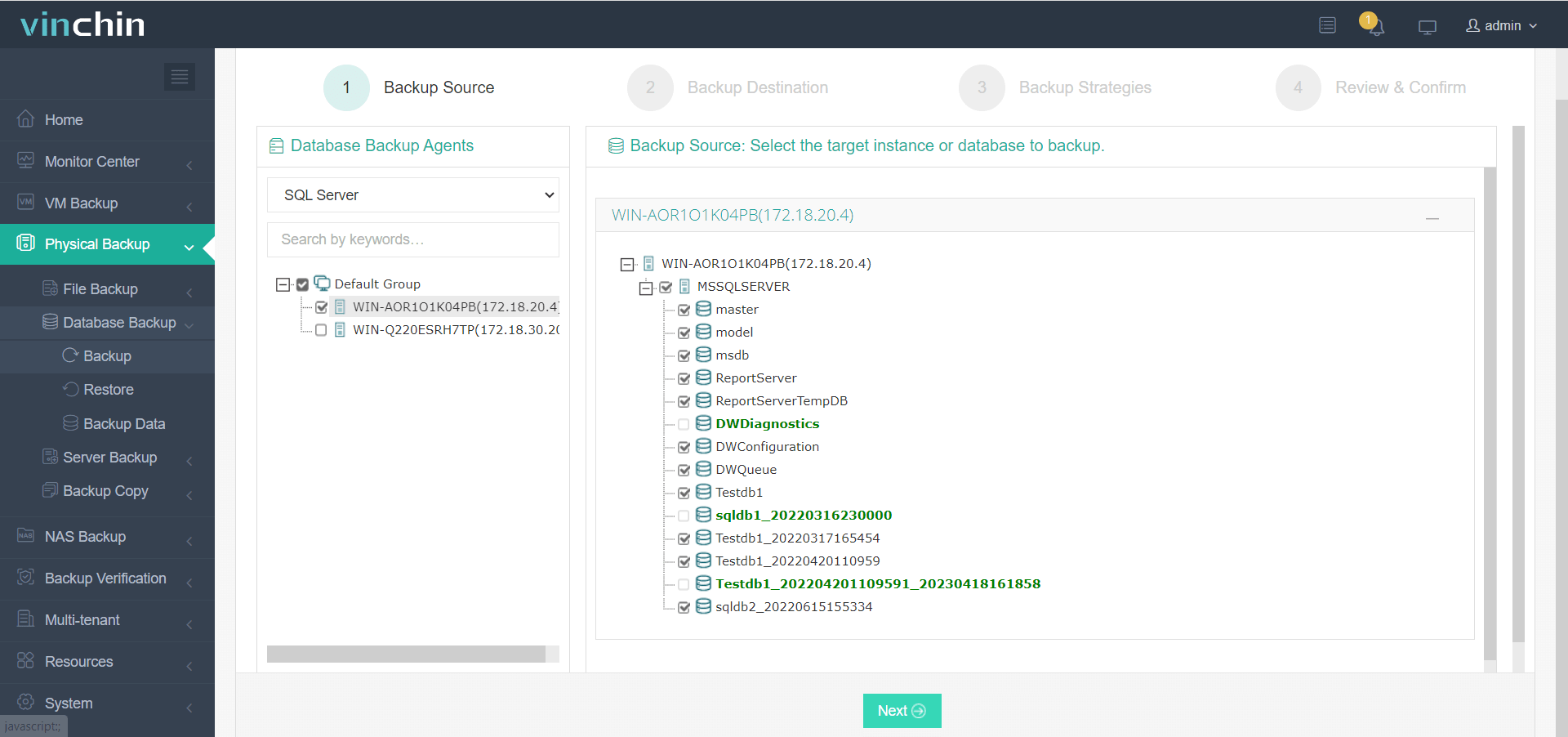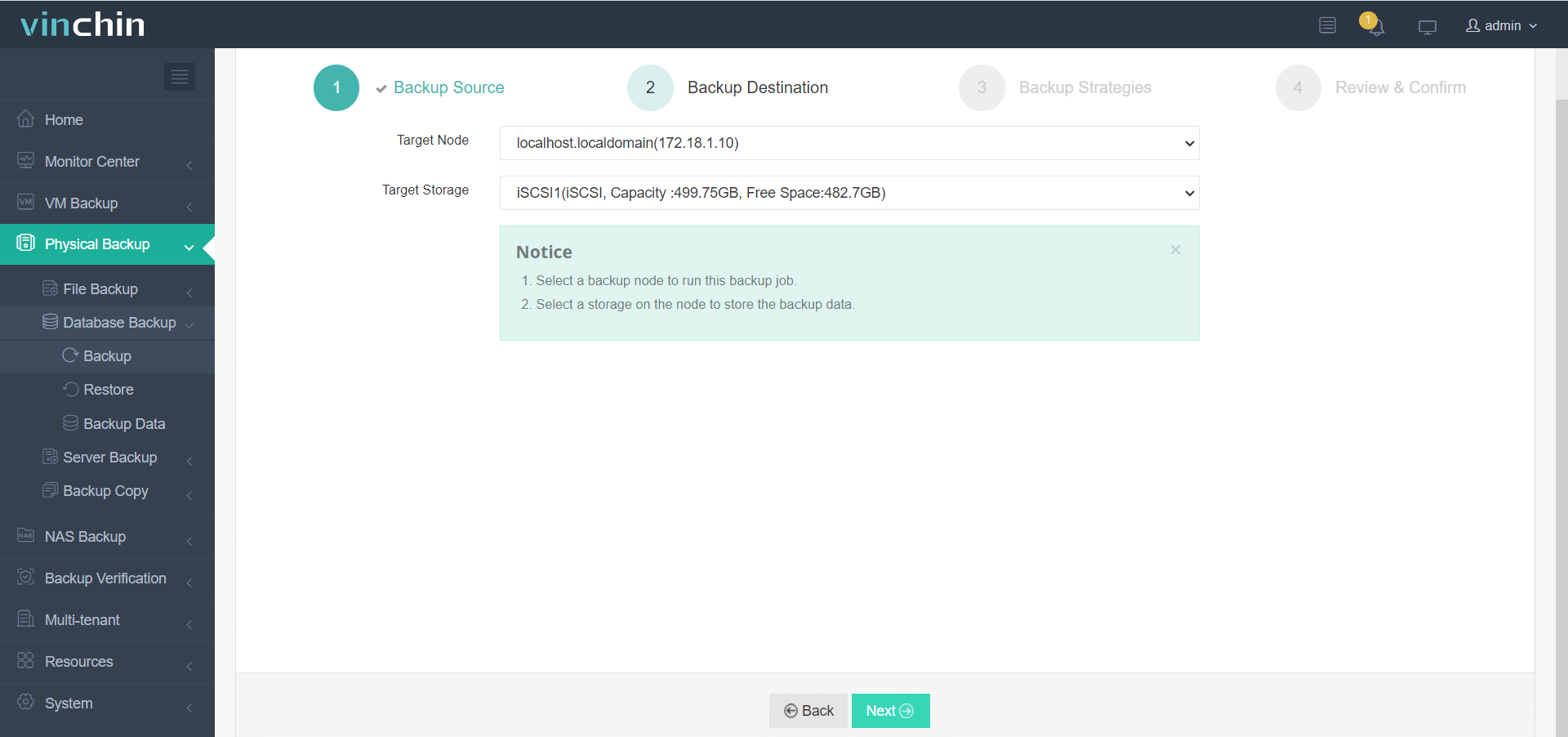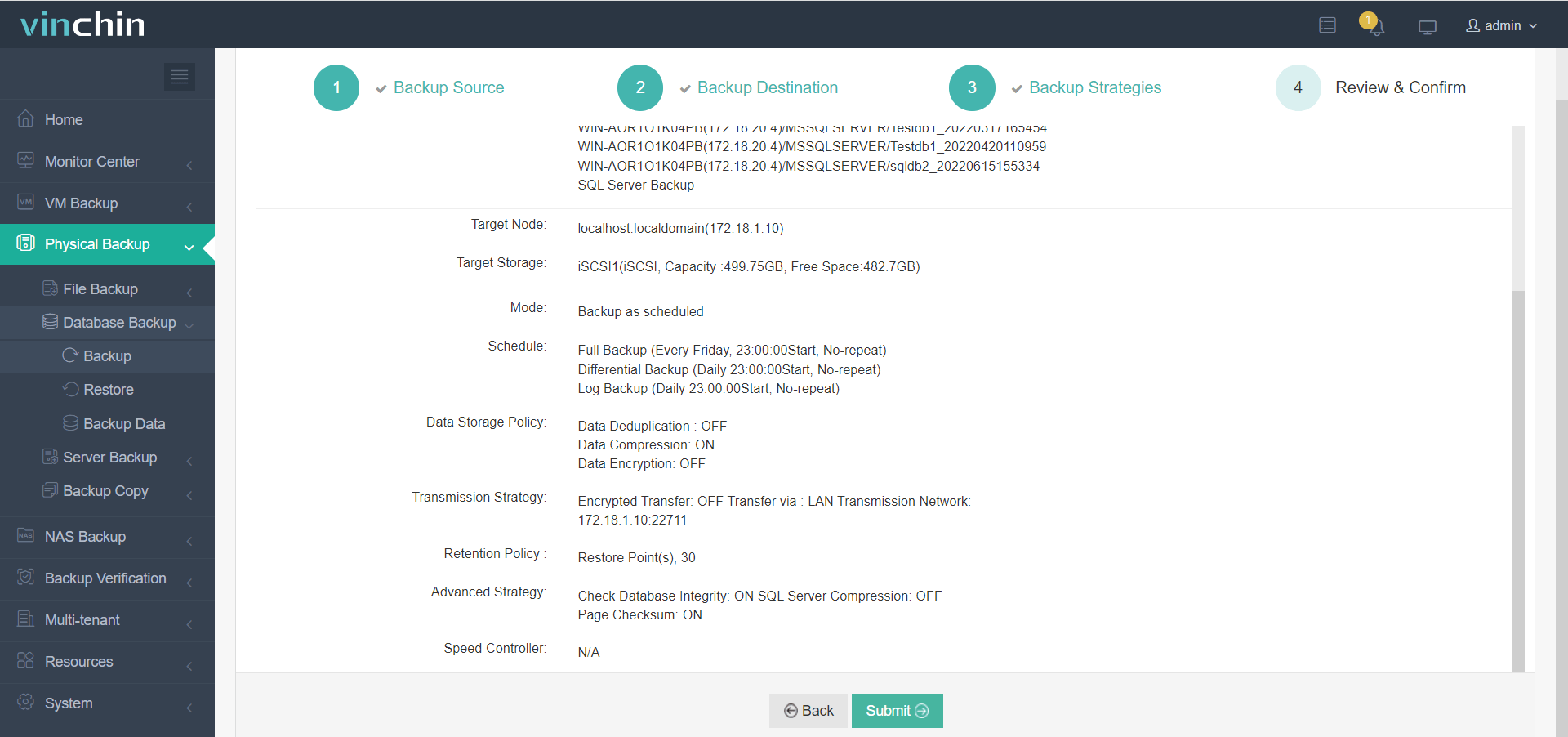-
What Is SQL Server Database Mail?
-
Method 1. Setting Up Database Mail in SQL Server
-
Method 2. Configuring Database Mail Using T-SQL
-
Why Use Database Mail in SQL Server?
-
Protecting Your Databases with Vinchin Backup & Recovery
-
SQL Server Database Mail FAQs
-
Conclusion
Email notifications are essential for modern database administration. They keep you updated about job statuses, errors, backups, and system health—often before users notice issues themselves. SQL Server Database Mail is the built-in feature that lets SQL Server send emails directly through an external SMTP server. Whether you want to automate alerts for failed jobs or deliver query results to your team’s inboxes, Database Mail is your go-to tool within SQL Server environments.
But how do you set up sql server database mail? What are best practices for security? And what should you do when things go wrong? Let’s walk through everything step by step—from beginner basics to advanced tips.
What Is SQL Server Database Mail?
SQL Server Database Mail allows the SQL Server Database Engine to send emails using an external SMTP server. This feature supports multiple accounts and profiles, attachments of various types, HTML formatting, and secure connections via SSL/TLS. Unlike its predecessor SQL Mail—which required Outlook or MAPI—Database Mail uses standard SMTP protocols only.
This design makes sql server database mail reliable in most IT environments because it does not depend on local email clients or extra software components. It also leverages Service Broker technology inside SQL Server to process outgoing emails asynchronously—so sending messages will not slow down your queries or transactions.
If you need automated notifications about job failures or want scheduled reports sent out daily without manual effort, sql server database mail is a core capability every administrator should master.
Method 1. Setting Up Database Mail in SQL Server
The most common way to configure sql server database mail is through SQL Server Management Studio (SSMS). This graphical method uses a wizard that guides you through each step—even if you’re new to SQL Server administration.
Before starting:
Gather your SMTP server details: address (hostname), port number (commonly 25, 587, or 465), authentication credentials (username/password), and whether SSL/TLS is required.
Ensure your Windows firewall allows outbound traffic on the chosen SMTP port; otherwise emails may fail silently.
You must be a member of the sysadmin role in order to configure Database Mail settings.
Here’s how you set up sql server database mail using SSMS:
1. Open SSMS and connect to your target SQL Server instance.
2. In Object Explorer, expand your server node then expand Management.
3. Right-click Database Mail and choose Configure Database Mail from the context menu.
4. On the Welcome page of the wizard click Next.
5. On the Select Configuration Task page select Set up Database Mail by performing the following tasks then click Next again.
6. If prompted that Database Mail isn’t enabled yet click Yes when asked if you want to enable it now.
7. On the New Profile page enter a descriptive name under Profile name, add an optional description if desired then click Add to create a new mail account for this profile.
8. In the dialog fill out:
A unique Account name
The sender’s full Email address
Optional display name
Optional reply email
Your SMTP provider’s exact Server name
Correct port number (check with your provider)
Check if “This server requires a secure connection (SSL)” applies
Choose authentication type (Basic Authentication) then enter username/password as needed
9. Click OK after entering all details then click Next on profile screen
10. On the next screen (Manage Profile Security) set this profile as both “Public” (if all users may use it) and “Default Profile” if desired; click Next
11. Review system parameters such as attachment size limits or retry attempts; adjust only if necessary then click Next
12. Review configuration summary carefully; click Finish
13. When setup completes click Close
To confirm everything works: right-click on Database Mail, select Send Test E-Mail, enter recipient address/subject/body then click “Send Test E-Mail.” If it arrives successfully at its destination—you’re ready!
Tip: If test emails don’t arrive check both spam folders and firewall rules blocking outbound SMTP ports.
Method 2. Configuring Database Mail Using T-SQL
For advanced users managing many servers—or those who prefer automation—T-SQL scripts offer fast repeatable configuration of sql server database mail across environments.
Before running scripts:
Make sure “Database Mail XPs” option is enabled so extended procedures can run:
EXEC sp_configure 'show advanced options', 1; RECONFIGURE; EXEC sp_configure 'Database Mail XPs', 1; RECONFIGURE;
Now create a new mail account:
IF NOT EXISTS ( SELECT * FROM msdb.dbo.sysmail_account WHERE name = 'MyMailAccount' ) BEGIN EXEC msdb.dbo.sysmail_add_account_sp @account_name = 'MyMailAccount', @description = 'Mail account for SQL Server notifications', @email_address = 'sqlserver@example.com', @display_name = 'SQL Server', @mailserver_name = 'smtp.example.com', @port = 587, @enable_ssl = 1, @username = 'smtp_user', @password = 'smtp_password'; END
Then create a profile—and link it:
IF NOT EXISTS ( SELECT * FROM msdb.dbo.sysmail_profile WHERE name = 'MyMailProfile' ) BEGIN EXEC msdb.dbo.sysmail_add_profile_sp @profile_name = 'MyMailProfile', @description = 'Profile for SQL Server notifications'; END IF NOT EXISTS ( SELECT * FROM msdb.dbo.sysmail_profileaccount WHERE profile_id = (SELECT profile_id FROM msdb.dbo.sysmail_profile WHERE name='MyMailProfile') AND account_id = (SELECT account_id FROM msdb.dbo.sysmail_account WHERE name='MyMailAccount') ) BEGIN EXEC msdb.dbo.sysmail_add_profileaccount_sp @profile_name = 'MyMailProfile', @account_name = 'MyMailAccount', @sequence_number = 1; END
Grant access so all users in msdb can use this profile:
EXEC msdb.dbo.sysmail_add_principalprofile_sp @profile_name = 'MyMailProfile', @principal_name = 'public', @is_default = 1;
Finally send yourself a test message:
EXEC msdb.dbo.sp_send_dbmail @profile_name = 'MyMailProfile', @recipients = 'your.email@domain.com', @subject = N'Test Email from SQL Server Database Mail', @body = N'This is a test email sent from SQL Server Database Mail.';
For automation: Save these scripts in version control systems like Git so they can be reused across development/test/production servers without manual re-entry.
Tip: Never store plain-text passwords in shared scripts—instead use secure storage solutions like Azure Key Vault where possible.
Why Use Database Mail in SQL Server?
Why do so many organizations rely on sql server database mail? Because it enables proactive management of critical systems through timely alerts—before small problems become outages!
With proper configuration you’ll receive instant notification when jobs fail overnight—or when disk space runs low—allowing rapid response instead of waiting until business hours begin.
You can also automate delivery of query results: schedule daily status reports straight from stored procedures using sp_send_dbmail, freeing staff from repetitive manual tasks while improving accuracy at scale.
Multiple profiles/accounts let you route different types of messages through separate channels—for example separating internal IT alerts from customer-facing communications—all while maintaining detailed logs for auditing purposes.
Integration with tools like SQL Server Agent means even complex workflows benefit from robust alerting without custom code—just point job notifications at your configured profile!
Protecting Your Databases with Vinchin Backup & Recovery
Beyond monitoring with sql server database mail, safeguarding actual data requires robust backup solutions tailored for enterprise needs. Vinchin Backup & Recovery stands out as an enterprise-grade platform supporting mainstream databases—including Oracle, MySQL, MariaDB, PostgreSQL, PostgresPro, MongoDB, and especially Microsoft SQL Server—to ensure comprehensive protection across diverse environments.
Vinchin Backup & Recovery delivers essential features such as incremental backup support for Microsoft SQL Server databases, batch backup capabilities for efficient management at scale, flexible scheduling options with GFS retention policies, ransomware protection mechanisms built-in by default, and seamless cloud backup/tape archiving integration—all designed to maximize reliability while minimizing administrative overheads in demanding production settings.
Managing backups through Vinchin Backup & Recovery's intuitive web console takes just four steps:
1. Select source SQL Server database(s),

2. Choose target storage location(s),

3. Configure backup strategies,

4. Submit the job.

Join thousands worldwide who trust Vinchin Backup & Recovery's proven reliability—with top ratings among enterprise customers—and experience every feature risk-free during their generous 60-day full-featured free trial! Click below to get started today.
SQL Server Database Mail FAQs
Q1: Can I change my SMTP password without recreating my entire mail account?
A1: Yes—right-click on Database Mail > Configure > Manage Accounts > Edit Account > update password field > save changes > restart service if prompted.
Q2: Why are my emails delayed even though they eventually arrive?
A2: Delays often result from temporary network congestion between your DB host/server/provider—or throttling policies enforced by some cloud-based SMTP services during high-volume periods.
Q3: How do I purge old log entries related only to failed sends?
A3: Run DELETE FROM msdb.dbo.sysmail_event_log WHERE event_type='error' AND log_date < GETDATE()-30 replacing “30” with desired retention period in days.
Conclusion
SQL Server Database Mail gives administrators powerful tools for automating alerts reporting directly from their databases—with easy setup via SSMS wizards or T-SQL scripting alike! For complete protection consider Vinchin backup solutions alongside robust notification strategies so nothing slips past unnoticed—even after hours!
Share on:






